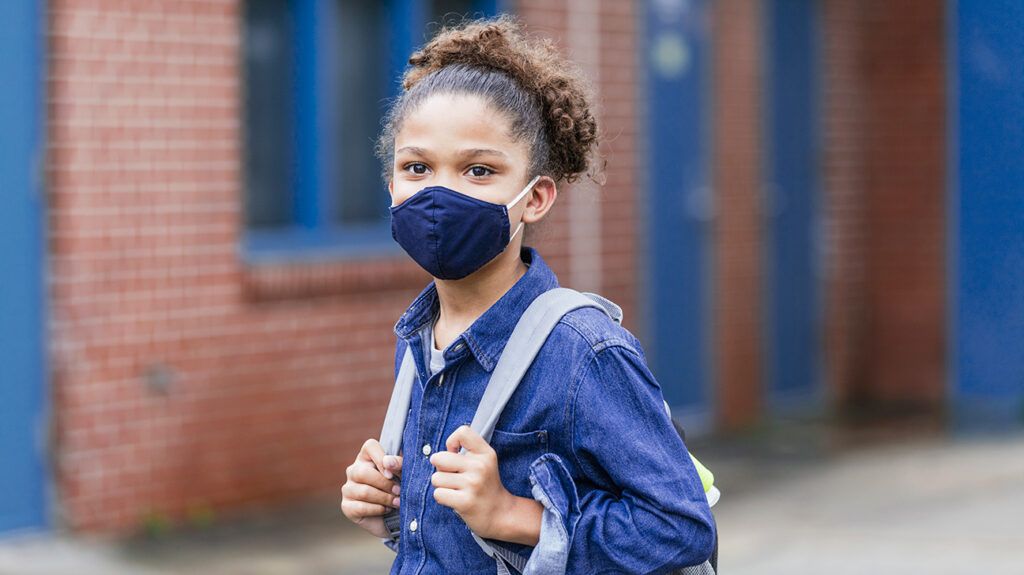
- The U.S. surgeon general issued an advisory to address the rising youth mental health crisis.
- Marginalized groups, such as LGBTQ and BIPOC (Black, Indigenous, and People of Color) youth, have been disproportionately affected.
- Stigma reduction, acceptance, social connectedness, and access to quality mental health care are a few ways to promote healing.
The U.S. surgeon general issued an advisory on Dec. 7 to highlight the growing mental health crisis affecting children and teens, especially those in marginalized groups.
Youth mental health has been declining in the United States for
The Surgeon General’s Advisory on Protecting Youth Mental Health presents a call to action to address the crisis, providing recommendations for individuals, families, and public and private sectors to improve the mental health of young people.
“Mental health challenges in children, adolescents, and young adults are real and widespread,” Surgeon General Vivek Murthy, MD, said in a press release. “The future well-being of our country depends on how we support and invest in the next generation.”
Young people have been experiencing increasing rates of helplessness, depression, and thoughts of suicide since at least 2009, according to the
“Before the pandemic, our society was reckoning with several simultaneous crises,” Kia Darling-Hammond, PhD, founder and CEO of Wise Chipmunk, an education and research firm based in Palo Alto, California, told Psych Central.
“Climate change, economic hardship, imperialism, violent racial inequity, violent gender inequity, school shootings, and a growing mental health crisis marked by increased youth suicide rates, particularly among Black and Native children and youth — the pandemic has exacerbated all of these things,” she added.
Added challenges
In his advisory, Surgeon General Vivek Murthy’s notes that youth were facing alarming and rising mental health challenges even before the COVID-19 pandemic:
- Before the pandemic, mental health issues were the leading cause of disability in young people.
- Between 2007 and 2018, suicide rates among youth ages 10–24 increased by 57%, with more than 6,600 suicide deaths in 2020.
- From 2009 to 2019:
- persistent sadness or hopelessness increased by 40% to affect 1 in 3 high school students
- suicidal behaviors among high school students also
increased , with 19% considering suicide, a 36% increase - 16% of high school students made a suicide plan, a 44% increase
Murthy notes that the pandemic has added to the challenges that U.S. youth were already facing.
The pandemic has disrupted the social lives and education of young people and affected their access to healthcare, social services, and more. Many children also lost a caregiver or loved one to the virus.
The
- boredom
- anxiety
- depression
- worry
- loneliness
- difficulty sleeping
“Depression and anxiety are completely understandable responses to the current state of our world,” said Darling-Hammond. “Everything is not fine; acknowledging that truth is actually healthy.”
Marginalized populations have also been disproportionately affected. For example, a 2021 review found significant barriers to mental health care among individuals in vulnerable populations.
Murthy’s advisory notes the following at-risk communities:
- racial and ethnic minorities
- LGBTQ+ youth
- youth with disabilities
- low-income youth
- youth in rural areas
- youth in immigrant households
- youth involved with the child welfare or juvenile justice systems
- homeless youth
- youth with disabilities
The pandemic has affected everyone, but marginalized groups have faced additional stressors.
Here, we address some of the unique challenges a few vulnerable populations face and what can be done to promote healing. Note that this is a broad overview and doesn’t account for all at-risk groups and circumstances.
BIPOC youth
The negative psychosocial impact of the pandemic has disproportionately affected Youth of Color, particularly those in low socioeconomic status.
According to 2021 research, the first year of the pandemic led to increased depression, anxiety, and social risks among urban, racial, and ethnic minority children ages 5 to 11 years old.
In addition, 50% of these families faced food and housing insecurity during the pandemic compared to 16% before. As such, many caregivers of young children experienced depression and stress.
How to heal
“Healing can only begin when we stop pretending that a return to ‘normal’ is possible at this time and instead support one another,” Darling-Hammond said.
“It’s silly to think that we’ll be able to ‘address’ children’s mental health without addressing the threats to their overall well-being, which means addressing threats to adult well-being,” she added.
According to Darling-Hammond, policies that will protect BIPOC communities are needed to promote stability and healing. Here are some suggestions:
- continued rent moratoria (postponement)
- stimulus payments (payments sent by the U.S. government to boost economic activity)
- safety mandates to protect workers
- wages commensurate with the cost of living
- hazard pay for those who risk their lives at work
- debt forgiveness
- communities could begin the healing process
LGBTQ youth
Research from The Trevor Project estimates that 1.8 million LGBTQ youth nationwide contemplate suicide each year. LGBTQ Youth of Color are especially vulnerable.
“LGBTQ youth are at elevated risk for depression, anxiety, and other mental health challenges, because of their vulnerability to social exclusion and stigma in their families, communities, and in society at large,” Abbie Goldberg, PhD, a Clark University psychology professor focusing on gender diversity and sexual orientation, told Psych Central.
“The pandemic rendered some LGBTQ youth even more vulnerable, as they were separated from key resources that served to affirm their identities and offer valuable support,” Goldberg added.
How to heal
LGBTQ youth need support and affirmation for their identities at home, school, and social settings. For instance, new Trevor Project research shows a link between identity acceptance and gender-affirming care like hormone therapy and a reduction in suicides.
“All families should destigmatize mental health struggles and convey openness about mental health, including accessing mental health resources such as therapy and medication, if necessary,” Goldberg said.
Youth with disabilities
According to the American Psychological Association (APA), the pandemic can make it difficult for children with disabilities to access medical supplies and resources, a stressor that could worsen their mental health.
Research from 2020 notes the effects of social distancing can be difficult for children to understand and impact their mental well-being, especially those with developmental and intellectual delays. Some children with disabilities may experience higher levels of social isolation as a result.
How to help
The APA reminds caregivers of children with disabilities to know their rights and take appropriate precautions. Also, talking with children who have special needs about COVID-19 safeguards, helping them manage their anxiety, and protecting the rights of youth at risk of self-harm are all critical.
The pandemic illuminated cracks in various systems that were there to begin with. While there are many causes for mental health issues among today’s youth,
Stigma reduction, awareness, accountability, social connectedness, acceptance, and access to quality mental health care are just the beginning when it comes to healing those affected by COVID-19.
Talk with your child openly about their mental health. While
“Schools, public health campaigns, and community agencies can do a lot to bring visibility to and humanize mental health challenges and help to destigmatize mental health help-seeking,” Goldberg said.
